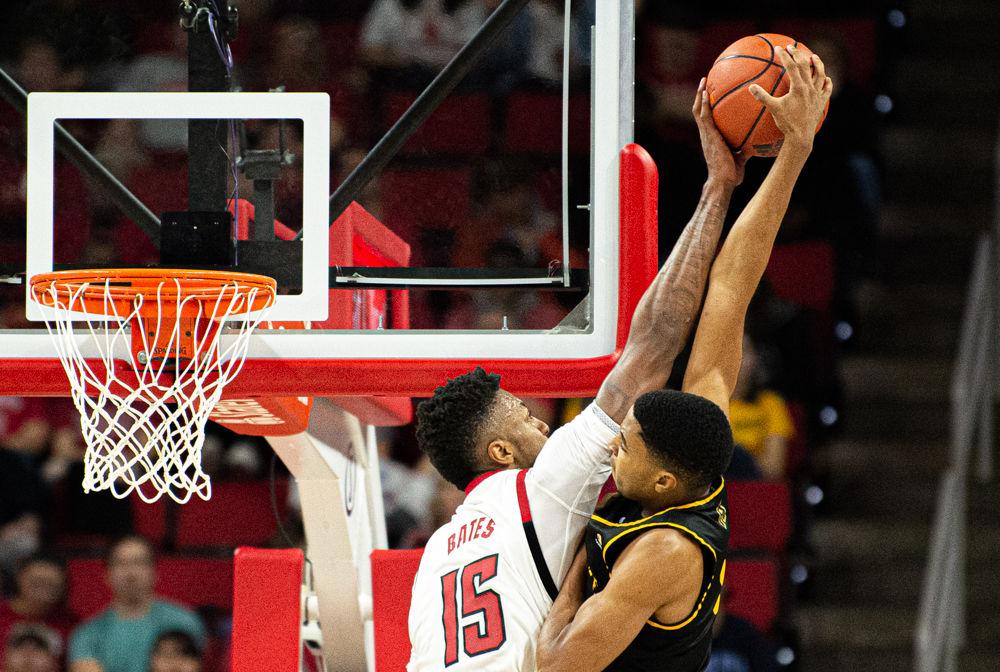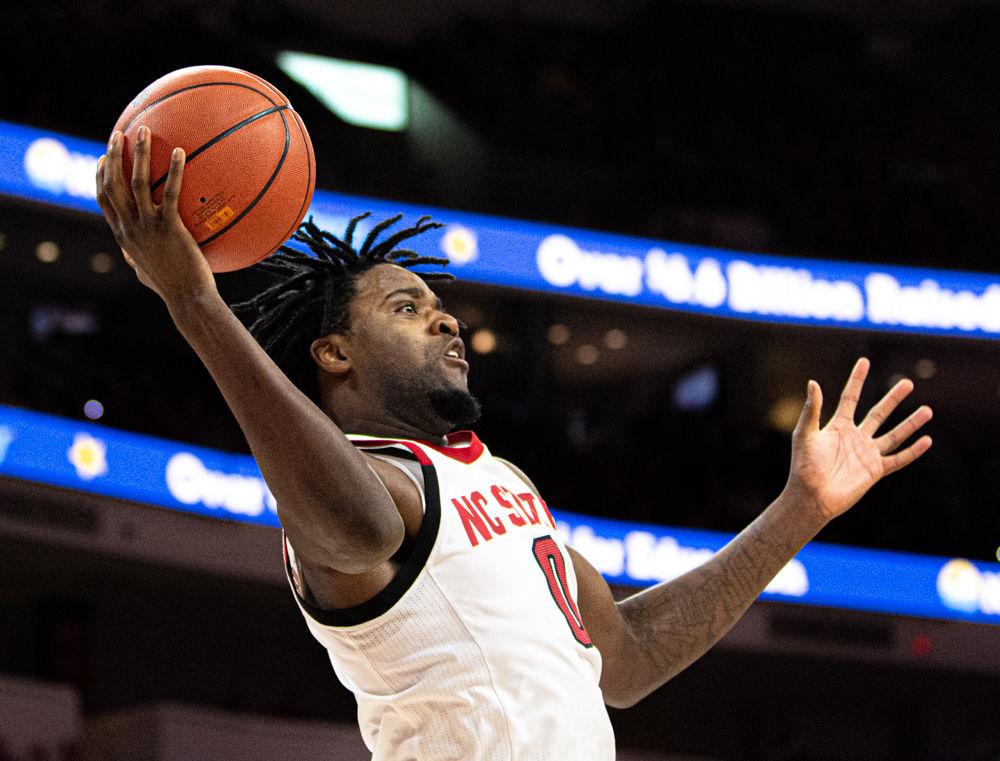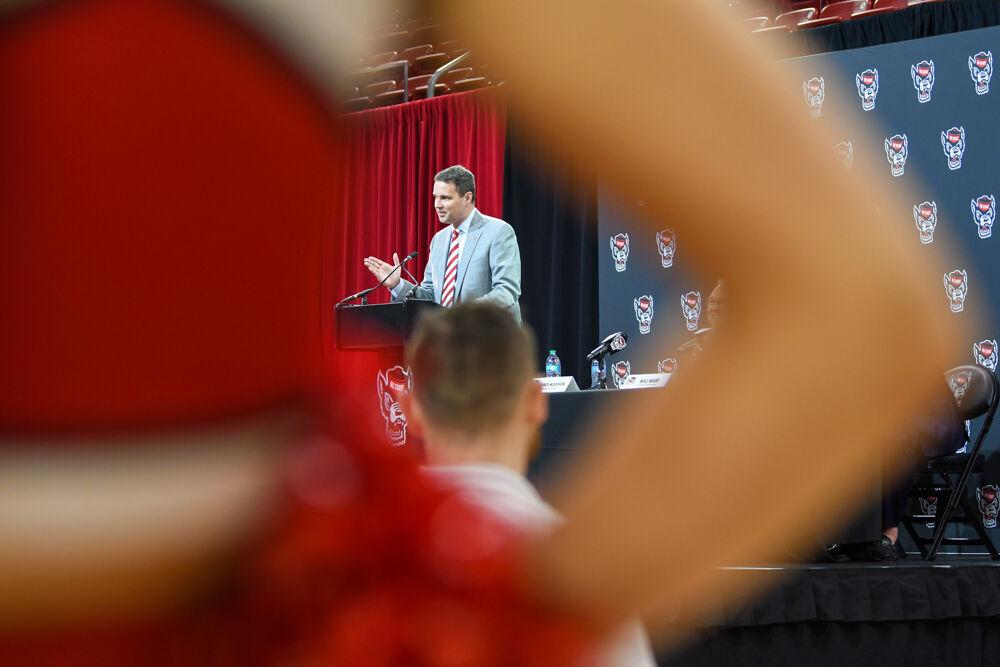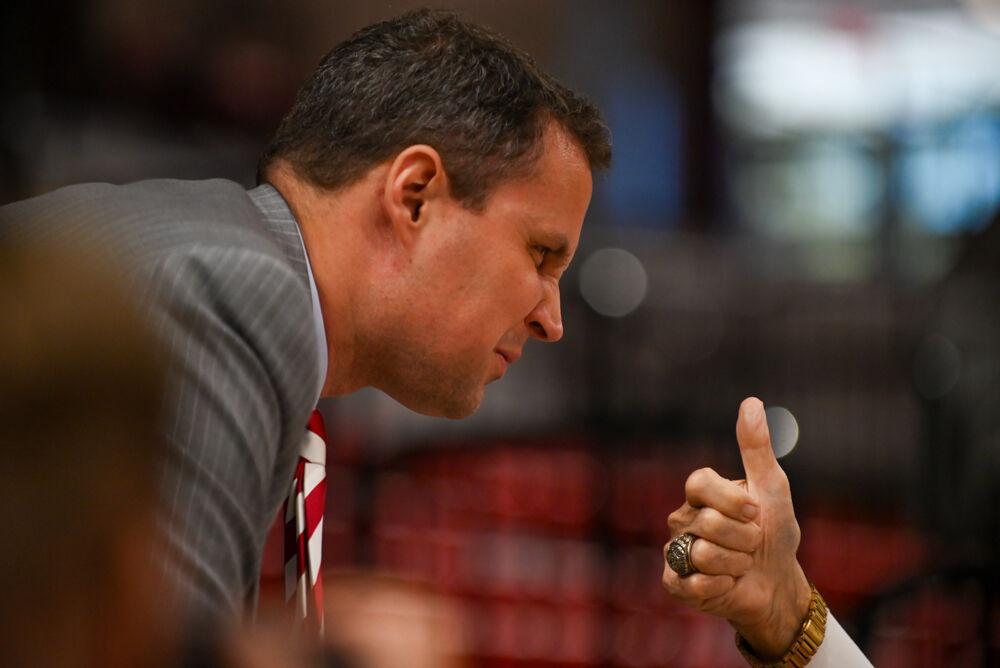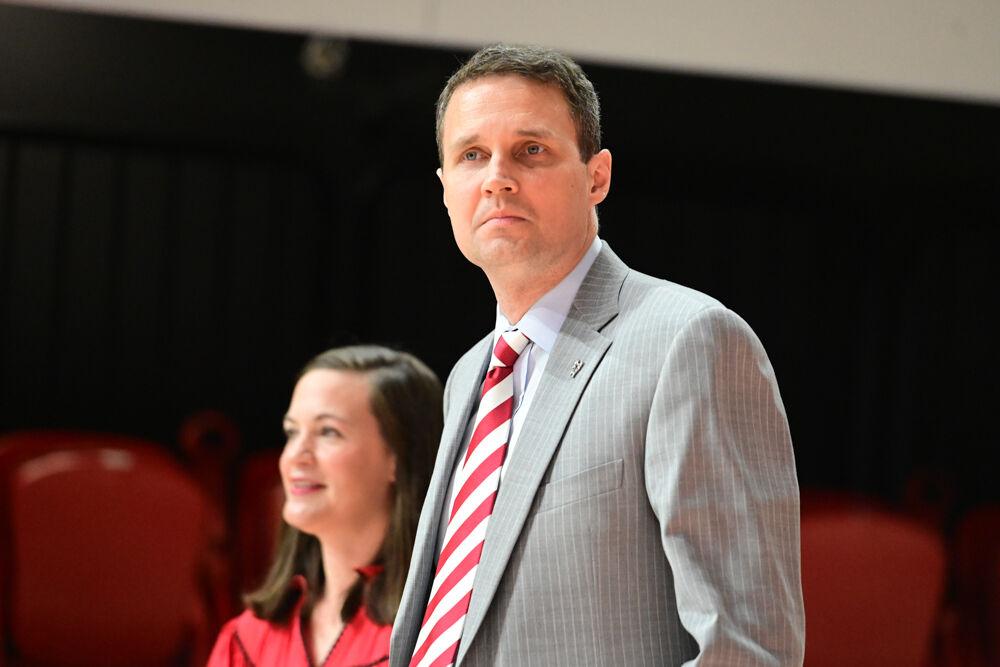NC State men’s basketball head coach Kevin Keatts has always been known for his small-ball lineup, which consists of four guards and one big man, sometimes including a smaller forward instead of a fourth guard. This is meant to speed up the game, score more points and take advantage of bigger and slower opponents. However, this can cause problems with rebounding, defensive mismatches and a lack of inside scoring.
Implementing more of a two-big-men lineup with redshirt freshman Manny Bates, who already starts, and redshirt junior D.J. Funderburk would help with the lack of rebounding situation, limit these mismatches and create more scoring opportunities in the paint. Keatts likes to have a bunch of shooters on the court, and this works out well since Funderburk can stretch the floor with a solid mid-range shot and a decent 3-ball. With the return of post player and paint presence grad transfer Danny Dixon, they are able to play more frequently since Keatts can put Dixon in the big-men rotation. However, Dixon is going to have to get more minutes if he hopes to do this since he averages only 4.6 minutes per game.
The rebounding has not been terrible for NC State basketball this year, but it’s a red flag that the team’s best rebounders are both ball handlers: redshirt senior C.J. Bryce, with 6.8 rebounds per game, and senior Markell Johnson, with five per game, who stands at 6-foot-1. The two main bigs, Funderburk and Bates, are also in the top five on the team in terms of rebounds. Despite having an offense that speeds up the tempo and takes a lot of shots, the team only averages 36.9 rebounds per game. That number is not awful, but it could be much better considering the leading rebounder has 6.8 rebounds per game and is a guard that stands at 6-foot-5.
Although most small-ball lineups aren’t terrific at rebounding, they usually make up for it with better outside scoring, faster tempo, more fast break points and more steals in the Wolfpack’s situation from pressing. The Wolfpack lineup has struggled to hit their shots from long range as of late, shooting 27.4% from deep over the past four games. Since a small-ball lineup usually needs teams to hit outside to open up inside scoring, the offensive efficiency decreases.
This was seen in the game against Appalachian State recently. NC State and the Mountaineers were neck-and-neck for the majority of the game since NC State shot 20% from the 3-point line. However, the things that kept them in the game were that the Wolfpack dominated App State in rebounding 53-34 and Funderburk’s inside scoring (22 points). Keatts was forced to play the Bates-Funderburk duo more often than not due to Bryce’s absence (concussion protocol), which is why the rebounding margin was so large.
Funderburk and Bates finished with a solid nine rebounds apiece but were still outrebounded by Johnson and redshirt junior guard Devon Daniels because they played almost 10 more minutes each. Also, the increased amount of touches in the paint and playing time for Funderburk allowed him to get his game going in the paint and put up much-needed points that the team could not get from deep or transition. Despite shooting poorly from the 3-point line, where almost a third of its shots came from, the team finished with an okay field goal percentage of 45.2%. The game probably wouldn’t have been as close if we saw more of the duo due to their dominance and impact in the paint during that game.
We also saw how the small-ball lineup failed in the loss against Clemson, where Funderburk did not start again alongside Bates. Games like this, where a crucial guard who is the leading rebounder is out, are where there would definitely need to be increased use of this Bates-Funderburk duo. The Wolfpack was outrebounded 34-30 by a poor rebounding Clemson team and were outscored 81-70 despite Clemson averaging only 67 points per game. When one guard is out of the lineup, the whole offense seems to be stagnant. The team also had zero fast break points the entire game, keeping them in half-court sets the entire game with a smaller lineup.
In the past few games, the Wolfpack just hasn’t been scoring and shooting 3s like it should be to open up the offense. Instead of continuing to force up 3-pointers, the team needs to look more in the paint for Bates and Funderburk to get buckets at the rim during half-court sets. The Wolfpack needs to go more in half-court sets, because the team also hasn’t been getting out and running on fast breaks like it should through steals and pressing. NC State has had fewer steals than three of its last four opponents, the fourth being Citadel, which only had one fewer steal. Their transition offense hasn’t been all the way there recently either, and the Pack has been forced to set up in these half-court sets, which is not what it’s used to.
The perfection of the small-ball lineup was showcased against UNCG, where the Wolfpack shot 46.4% from the 3-point line, which helped it shoot 56.6% from the field, had 10 steals compared to UNCG’s four, and scored 80 points against a UNCG team that allows just 57.9 points per game. This is all what it takes to have solid victories with a small-ball lineup: a decent 3-point percentage, a great amount of steals, transition offense and more possessions. Recently NC State has been shooting poorly from 3, not getting enough steals, setting up in too many half-court sets, and not getting enough possessions to be efficient in small-ball, which is why they should utilize the duo of huge big men Bates and Funderburk.
Redshirt junior forward D.J. Funderburk gets called for traveling while trying to save the ball from going out of bounds against Appalachian State on Sunday, Dec. 29, 2019 at PNC Arena. Funderburk recorded 22 points and nine rebounds as the Wolfpack won 72-60.


